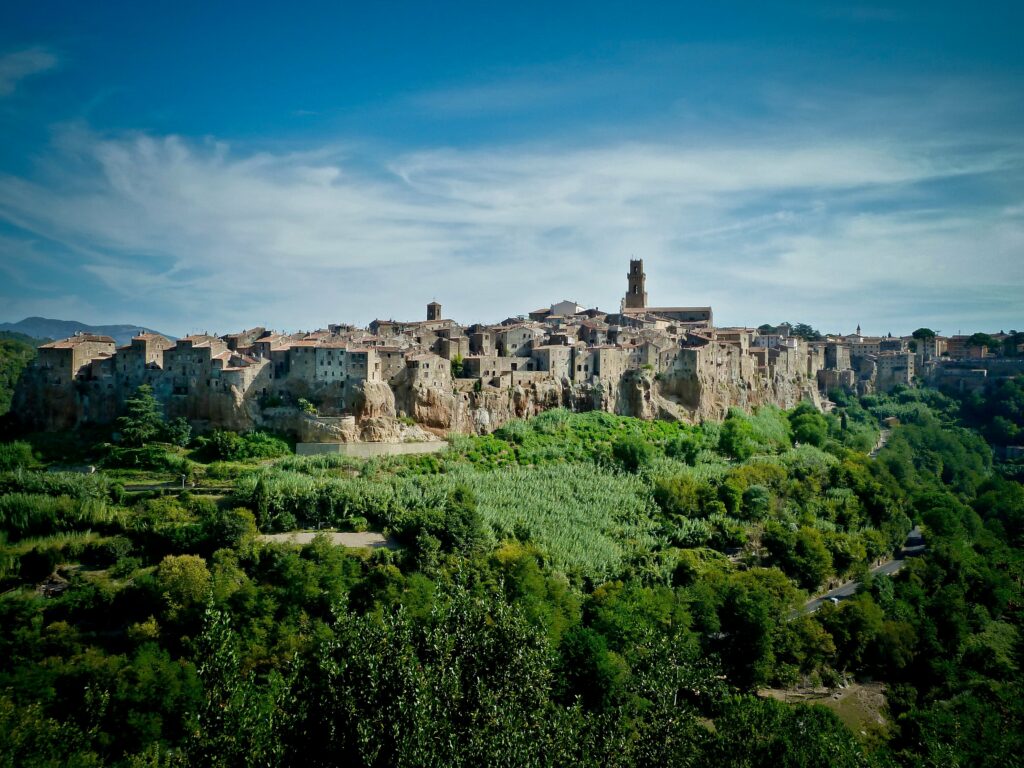
Pitigliano
A small village with ancient origins, medieval to be precise, Pitigliano is probably one of the best known villages in the Tuscan Maremma.
Located in the heart of the Tufo area, the ancient territory once inhabited by the Etruscans and Romans, Pitigliano is also known in the news with the nickname of "Little Jerusalem", starting from the 16th century in fact it welcomed a large Jewish community, and hosts still today a beautiful Jewish Ghetto with adjoining Synagogue.
The territory of Pitigliano was already inhabited in Etruscan times, in fact the first settlements and necropolises were born here, today kept within the Città del Tufo Archaeological Park, the first settlements date back to the Bronze Age.
The first certain information on the existence of a village called Pitigliano dates back to a papal bull of 1061, in that period Pitigliano was under the government of the Aldobrandeschi. In 1293, following the marriage between Anastasia Aldobrandeschi and Romano Orsini, the city of Pitigliano became part of the Orsini County, under which it remained until 1574, the year of the conquest of the county by the Medici, a few decades later, in 1604, Pitigliano was placed under the Grand Duchy of Tuscany.
What to see in Pitigliano:
- CATHEDRAL OF SAINTS PETER AND PAUL, is the Cathedral of Pitigliano, dates back to the medieval period but important restorations were also carried out during the sixteenth century, the facade is in late Baroque style, while inside you can admire some important works, including a painting by Pietro Aldi, painter from Manciano, depicting Henry IV in Canossa and the Predestination of Young Hildebrand
- SANCTUARY OF THE MADONNA DELLE GRAZIE, just outside the town, in a panoramic position with respect to the village, of which it offers a breathtaking view, the current appearance of the sanctuary is due to the restorations that took place in the 1500s
- CHURCH OF SAN ROCCO, built in the 12th century, is the oldest church in Pitigliano, it was built on a pre-existing pagan temple. The building is now in late Renaissance style, and the interior is rich in frescoes, the paintings dating back to the 17th century are very interesting
- GHETTO AND SYNAGOGUE, the Jewish ghetto is one of the most beautiful and best preserved in Tuscany, it houses a synagogue, with an adjoining museum, the unleavened bread oven, the cellar, the kosher butcher shop, the ritual bath
- PALAZZO ORSINI, built between the 11th and 12th centuries as the residence of the Aldobrandeschis, the palace was restored in 1500 by the Orsinis, based on a project by Antonio da Sangallo the Younger. The building now houses two important museums of Pitigliano, the Civic Archaeological Museum and the Diocesan Museum of Sacred Art
- MEDICI AQUEDUCT, built starting from 1500, the construction lasted for almost a century, and is one of the most symbolic buildings in Pitigliano
- CINTA MURARIA, built by the Aldobrandeschi in the 9th century, two ancient access gates are part of it, Porta Sovana and Porta della Cittadella
- VIE CAVE, the ancient ways of communication and trade of the Etruscans, dug into the imposing tuff rocks, are narrow paths wedged between high tuff walls, even 3 meters high, they were used by the Etruscans to transport goods and defend themselves from enemy attacks